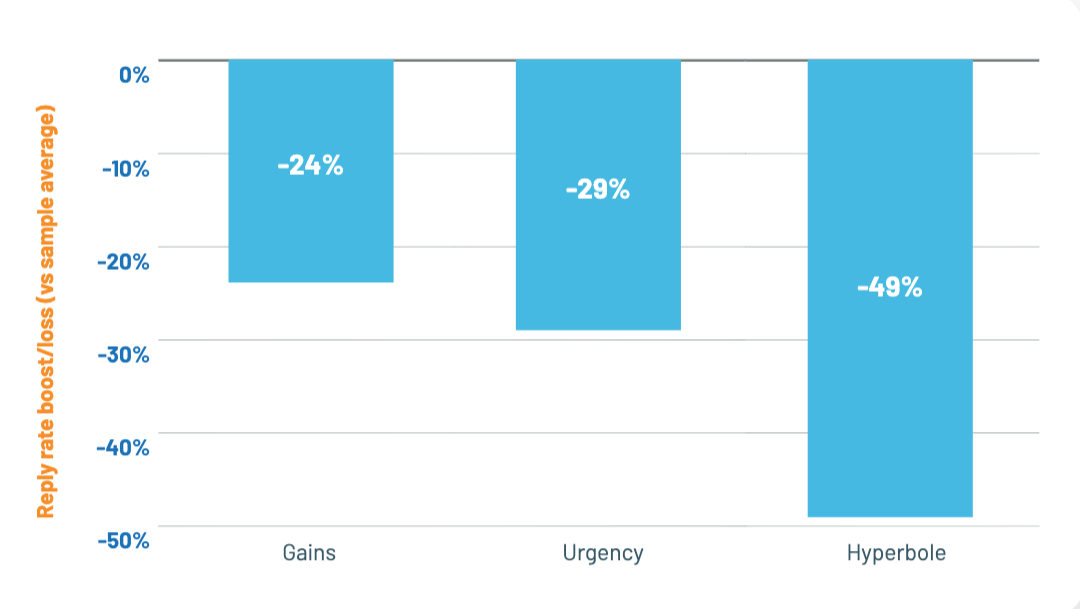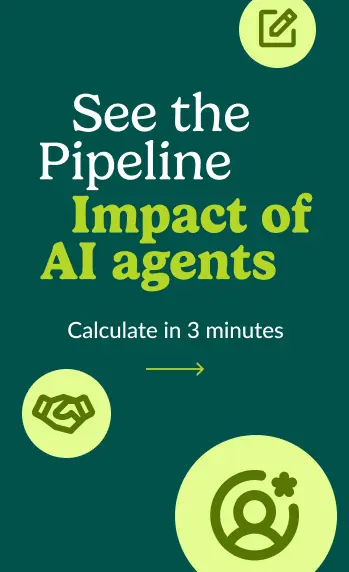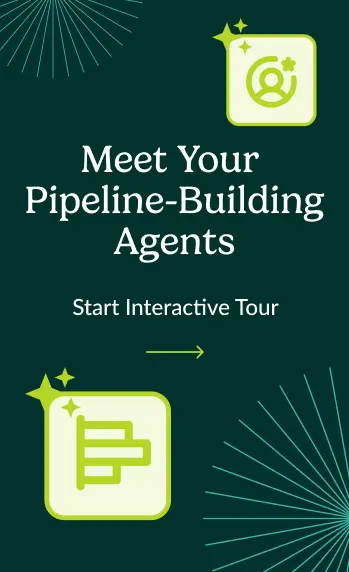10 Email Subject Line Tips to Increase Open Rates in Sales
Updated:
Published:

We all know that making a good first impression is important. Even if you are the most interesting, funny, entertaining person out there (which we’re sure you are), a bad first impression can deter people from wanting to get to know you more.
The same is true for subject lines of B2B sales emails. When you send an email, the first thing your prospect will see is the subject line. What you choose to say determines whether they want to open and learn more or send it straight to the archives.
No pressure, right?
Luckily, we can help you start off on the right foot. We analyzed hundreds of millions of interactions to create recommendations based on real data. From word choice to a call to action, this is the only email subject line resource you’ll ever need for understanding what works and what does not in AI-powered sales engagement.
So without further adieu, here are 10 email subject line best practices to make the best first impression ever.
Tip #1: Craft subject lines with 1 to 4 words.
Empty subject lines perform better than average but can be suboptimal and can come off as sneaky. At 6 words in a subject line, bad things start to happen to the reply rate. An engaging subject line should be short and sweet. Leave the good stuff for the email itself.
Examples of 1-word subject lines:
- Hey
- Company name
- Meeting
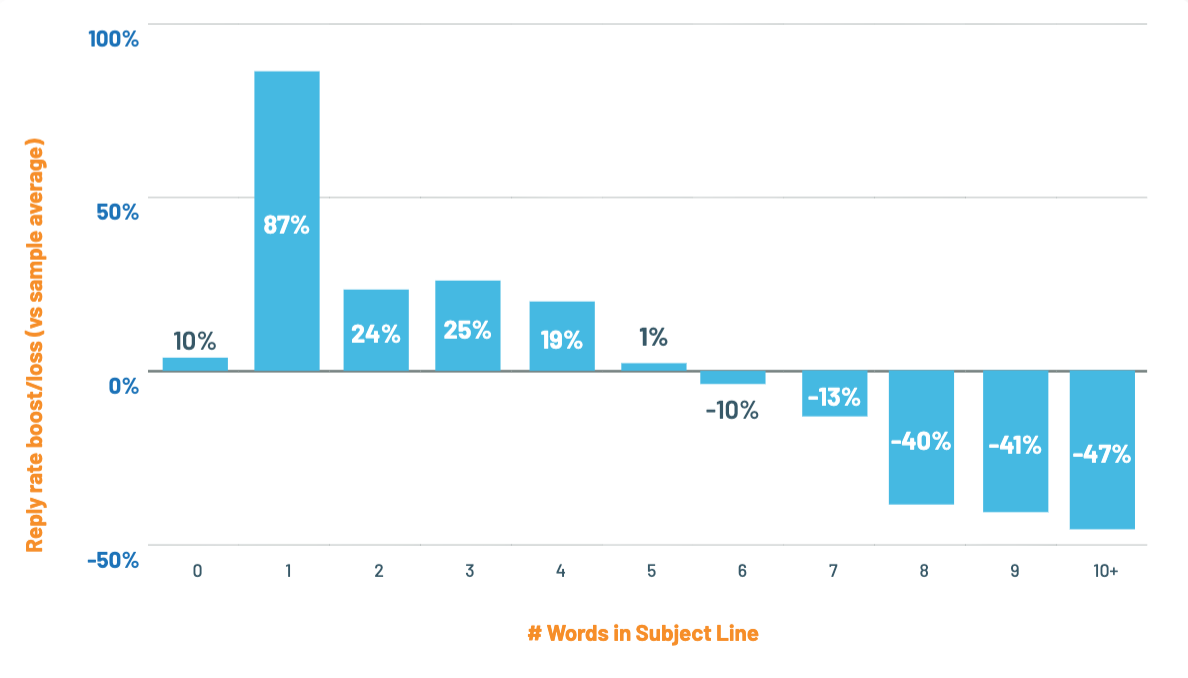
Tip #2: ALL CAPS BEATS all lowercase… BUT WE DEFINITELY DON’T RECOMMEND IT.
YOU WOULD GET NUMB TO ALL CAPS PRETTY QUICKLY IF EVERYONE WROTE LIKE THIS.
(Sorry. We didn’t mean to yell.)
Tip #3: Asterisks work better than other types of subject line punctuation.
Here are a few hypotheses we’ve developed from our research:
- Asterisks are attention-grabbing
- Exclamation marks are fine
- Questions demand effort
- Commas are a sign your subject line is too long
A good rule of thumb is to use punctuation sparingly and authentically.
Here are some examples using punctuation:
- ***Salesloft Meeting***
- Hello!
- *Congrats* from Salesloft

Tip #4: Numbers in subject lines are not good.
When you receive an email, you are more likely to open it if you know someone sent it to you personally.
Based on our research, we believe that the general sentiment is that impersonal email marketing is more likely to use numbers in subject lines. Therefore, they’re more likely to have much lower email open rates.
Save the numbers for the email itself, not the subject line.

Tip #5: In subject lines, it is better to mention your own company than the recipient’s name or company.
This seems to indicate two things, one bad and one good:
- You would not put a colleague’s first name in a subject line (it may be a signal of spam), and
- The use of the sender’s company ties directly to the content of the email (this is a good thing).
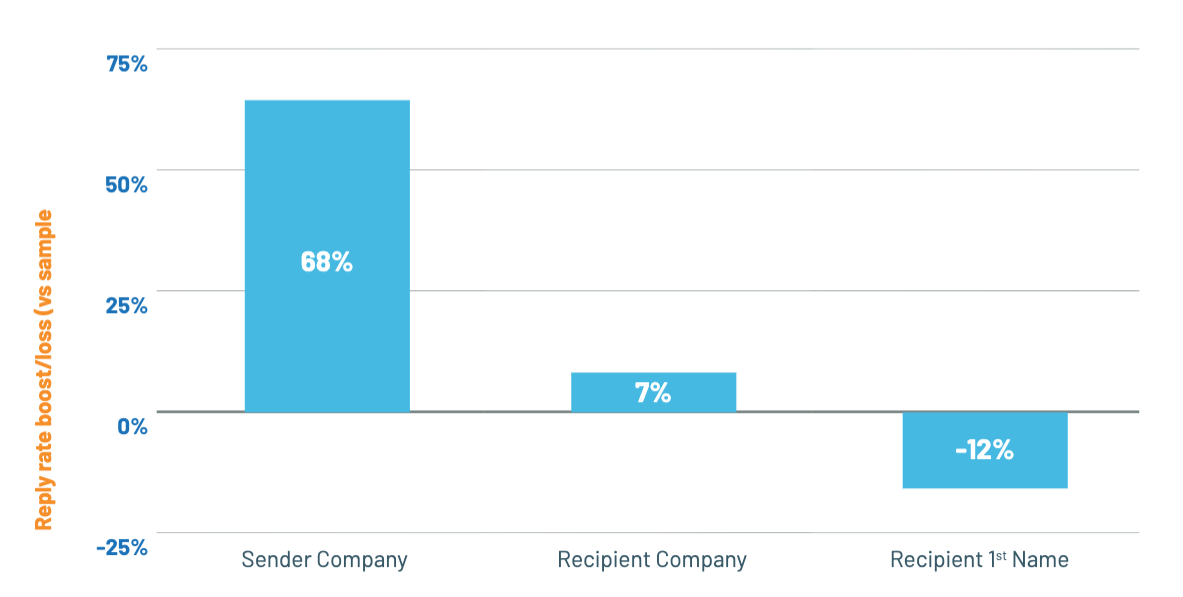
Tip #6: Greetings work in subject lines.
We studied the use of “Hello,” “Hi,” and “Hey.” It appears that “Hello” is by far the winner with an average of 200% more replies than “Hi” or “Hey”.
This great subject line is the perfect balance of pleasant, honest, and slight informality.
Tip #7: If you were referred, say it in the subject.
Unsurprisingly, referrals remain the single best way to engage prospects. Prospects are much more likely to trust you when there is a shared connection versus a cold email.
Ask for referrals and don’t be shy about using them to get in the door with a prospect. It could deliver over a 500% return on your reply rate!
- *Referral* from Jeremey at Salesloft
- Jeremey referred me to you
- Jeremey from Salesloft says hello!
Tip #8: Flattery remains highly effective.
You know the saying “flattery will get you everywhere”? It’s not wrong.
Both “Congrats” and “Congratulations” yielded big returns in subject lines. Of the two, the shorter, friendlier “Congrats” is your best bet for a higher click through rate.
- Congrats from Salesloft!
- ***Congratulations***
- Hello and congrats!
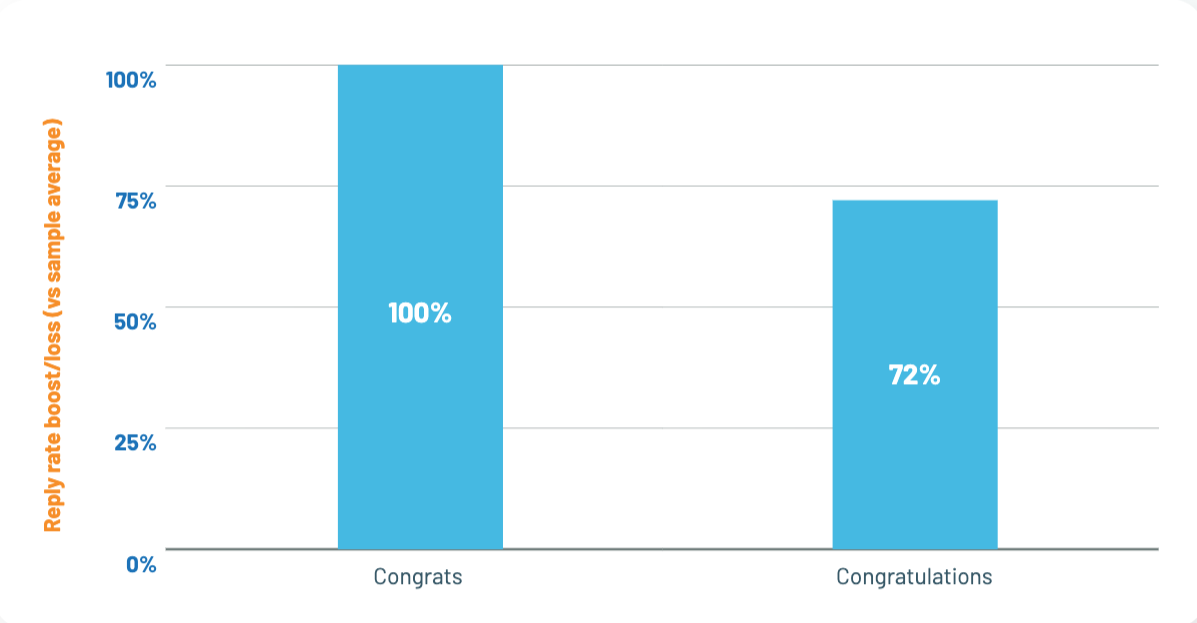
Tip #9: Break up language is still working.
Loss aversion is a powerful motivator. Not much has changed since high school.
Breaking up is hard to do, but the good news is that break up language has become more professional and delivers 30% more replies on average.
Some subject line ideas for this include:
- Adieu
- Bugging
- Miss/ Missed
- Wrong
- Goodbye/ Bye
Tip #10: Avoid “influence & persuasion” language in subject lines.
Gains, urgency, and hyperbole are indicators of spam or disingenuous communication.
Here are some specific words to avoid using:
- “Gains” words: guaranteed; special; quick; exclusive; new; free; better; best; revenue; value; increase; offer; valuable; save; savings; ROI
- “Urgency” words: need; limited; now; ready; only; last; final; deadline; only
- “Hyperbole” words: fantastic; amazing; awesome; ultimate
